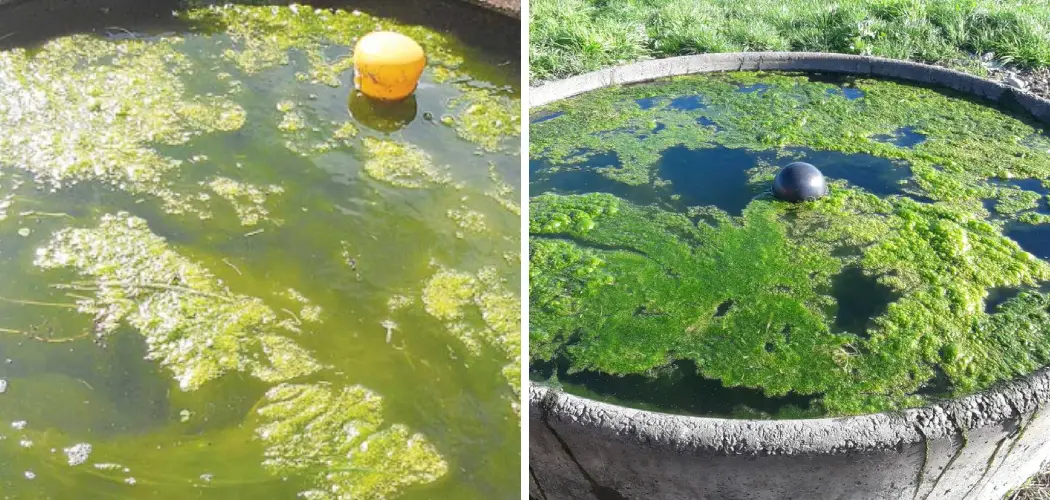Algae growth in water troughs poses numerous challenges for livestock owners, from contaminating drinking water to reducing trough capacity and potentially harming animals. Fortunately, with proactive measures, algae proliferation can be effectively controlled.
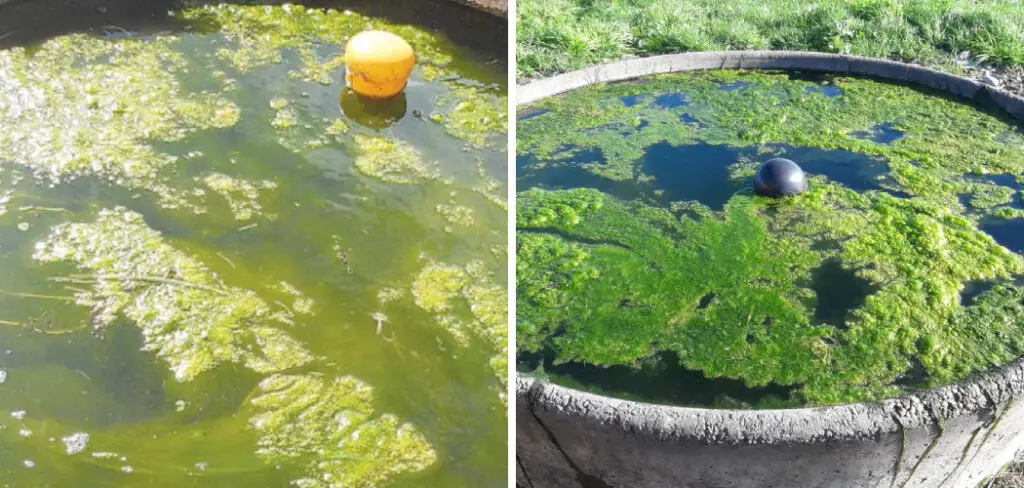
Implementing strategies to prevent algae growth not only ensures clean and safe water for your animals but also helps maintain the integrity and longevity of your troughs. In this comprehensive guide, we’ll explore a range of proven techniques and best practices for how to prevent algae growth in water trough.
From regular cleaning and maintenance routines to the strategic placement of troughs and the use of natural additives, you’ll discover practical solutions tailored to your specific needs and environment. By understanding how to prevent algae growth in water troughs, you can safeguard the health and well-being of your livestock while optimizing the efficiency and functionality of your watering systems.
Importance of Preventing Algae Growth
Preventing algae growth in water troughs is crucial for several reasons. Firstly, algae-contaminated water can be detrimental to the health of livestock, potentially causing illnesses that could lead to decreased productivity or even fatalities within the herd.
Algae blooms can also create anoxic conditions in the water, depleting oxygen levels and making the water unsafe for consumption. Furthermore, the presence of algae necessitates more frequent cleaning and maintenance, thereby increasing the workload and associated costs for livestock owners.
By preventing algae growth, not only is the water kept safe and clean for animals, but the longevity and usability of water troughs are also significantly improved. Additionally, clean water troughs contribute to the overall hygiene and sanitation of the farm, reducing the risk of disease spread among animals.
Understanding Algae Growth in Water Troughs
Algae growth in water troughs is fundamentally influenced by a combination of factors that provide an ideal environment for its proliferation. Understanding these factors is key to implementing effective preventative measures.
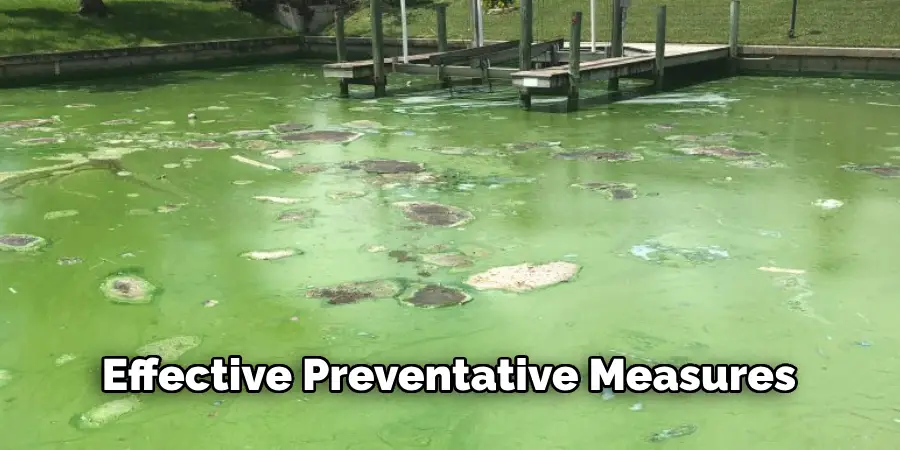
Algae typically thrive in warm, nutrient-rich environments, with sunlight acting as a catalyst for their photosynthesis process. This means that troughs positioned in direct sunlight with stagnant water that accumulates organic matter, such as leaves or feed, are more susceptible to algae blooms.
Additionally, the material of the trough can impact algae growth, with some materials offering a more conducive surface for algae to adhere to and multiply. Identifying these contributing factors provides a solid foundation for strategies aimed at minimizing the conditions favorable to algae, thereby effectively managing its growth in water troughs and ensuring the health and hydration of livestock.
Common Factors Contributing to Algae Growth
Algae growth in water troughs is influenced by several common factors that create an ideal environment for their development. Understanding these factors is essential for effective algae management.
- Sunlight Exposure: Sunlight is a primary driver of algae growth, providing the energy needed for photosynthesis. Troughs placed in areas with significant direct sunlight are more prone to developing algae blooms.
- Nutrients in Water: Algae feed on nutrients found in water, such as nitrogen and phosphorus, which often come from organic debris (leaves, grass), fertilizers, and animal waste. These nutrients act as a fertilizer for algae, accelerating their growth.
- Stagnant Water: Stagnant or slow-moving water provides a stable environment for algae to anchor and grow. Unlike flowing water, which can disrupt algae formation, still water allows algae to thrive.
- High Temperatures: Warmer conditions facilitate faster algae growth. Therefore, water troughs are more susceptible to algae during the warmer months of the year.
- pH Levels: The pH level of the water can also affect algae growth. Algae generally prefer a pH range of 6 to 9, and water outside of this range may inhibit their development.
- Material of the Trough: The type of material used for the trough can influence algae growth. Materials like concrete or certain plastics may allow algae to adhere more easily and flourish compared to others that have smoother surfaces or are treated with algae-resistant coatings.

By addressing these factors, livestock owners can implement targeted strategies to minimize the conditions that favor algae growth, thereby protecting the health of their animals and maintaining clean and functional water troughs.
Potential Consequences of Algae Contamination
Algae contamination in water troughs poses significant risks to livestock health and operational efficiency on farms. When algae proliferate in water sources, they can lead to a variety of adverse consequences:
- Water Quality Degradation: Algae blooms can drastically reduce the quality of water, making it unpleasant or even hazardous for animals to drink. This can result in dehydration and, subsequently, reduced animal health and productivity.
- Toxicity: Some types of algae produce toxins that can be harmful or even fatal to livestock if ingested. These toxins can cause liver damage, neurological problems, and other serious health issues in animals.
- Oxygen Depletion: Dense algae growth can deplete oxygen levels in the water, especially overnight when photosynthesis is not occurring. This can create anoxic conditions, which are harmful to any aquatic life present in the trough.
- Increased Maintenance Costs: Controlling and cleaning algae-infested water troughs require additional time, effort, and resources. Algae buildup can also cause physical damage to troughs and water systems, resulting in costly repairs or replacements.
- Disease Transmission: Algae-covered troughs may harbor pathogenic bacteria and parasites, increasing the risk of disease transmission among livestock. This can lead to outbreaks of sickness, further exacerbating the challenges of managing animal health and sanitation on farms.
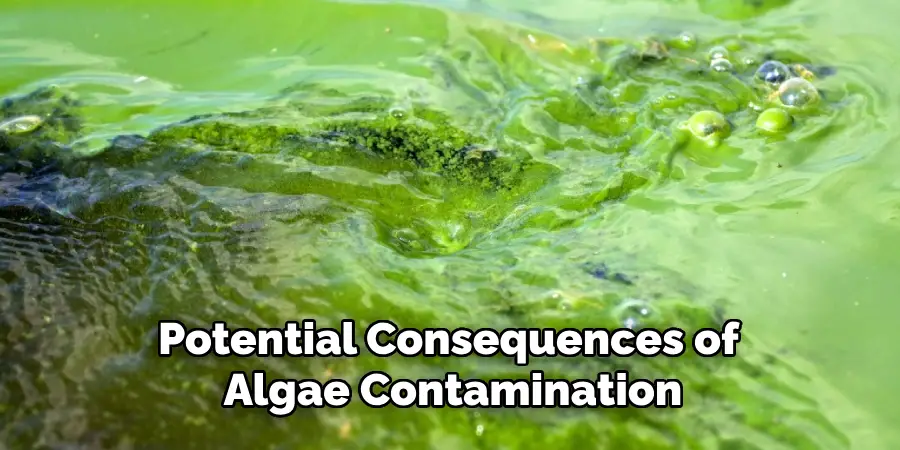
By understanding the potential consequences of algae contamination, livestock owners are better positioned to appreciate the importance of proactive measures in preventing algae growth and maintaining the safety and cleanliness of their water supplies.
Reasons for Preventing Algae Growth
Preventing algae growth in water troughs is essential for several compelling reasons that directly impact the health and efficiency of livestock management. Firstly, by ensuring the water remains clean and free of algae, farmers can significantly enhance the hydration and overall health of their animals.
Algae-contaminated water can deter livestock from drinking, leading to dehydration that adversely affects their health and productivity. Secondly, the prevention of algae growth helps avoid the serious health risks associated with algae toxins. Certain algae species produce toxins that can be fatal to livestock, causing a range of health problems from liver damage to neurological issues.
Furthermore, maintaining algae-free water troughs reduces operational costs in the long term. Algae removal and trough maintenance require time, effort, and resources, which can accumulate significantly over time. By implementing preventative measures, these costs can be minimized, resulting in more efficient farm operations.
In addition, preventing algae preserves the quality and lifespan of water troughs and associated equipment, as algae buildup can cause corrosion and damage, necessitating expensive repairs or replacements. Lastly, preventing algae contributes to the overall sanitation and biosecurity of the farm by reducing the risk of disease transmission through contaminated water sources.
Thus, the proactive management of algae growth is a strategic approach to ensuring the well-being of livestock, the longevity of farm resources, and the economic viability of livestock operations.
Ensuring Clean and Safe Drinking Water
Ensuring clean and safe drinking water for livestock is paramount for the successful operation of any farm or livestock management system. This critical task involves a combination of regular monitoring, maintenance, and proactive strategies. Firstly, water troughs should be cleaned regularly to remove any debris, organic matter, or algae accumulation.
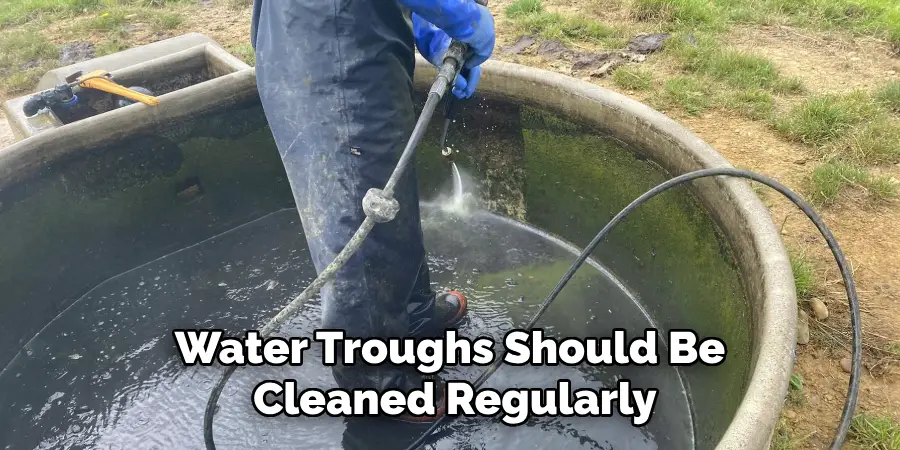
This can be achieved through physical cleaning and, if necessary, the use of approved algaecides that are safe for livestock. Secondly, implementing systems to keep water moving can significantly deter algae growth; options include the installation of water circulators or aeration systems that prevent water from becoming stagnant. Thirdly, water quality testing is essential for identifying and controlling the levels of nutrients, pH, and any potential contaminants that could foster algae growth or harm animal health.
Implementing shade structures or covering water troughs can also reduce sunlight exposure, slowing algae growth without compromising livestock access to water. Finally, selecting the right materials for water troughs and regularly inspecting for damage or wear can contribute massively to maintaining water quality.
Through these strategies, livestock keepers can ensure that their animals have access to clean and safe drinking water, thereby supporting animal health, farm productivity, and overall operational efficiency.
10 Methods How to Prevent Algae Growth in Water Trough
Method 1: Regular Cleaning and Maintenance
Regular cleaning is crucial for preventing algae growth in water troughs. Empty the trough periodically and scrub it thoroughly to remove any algae buildup. Use a stiff brush and mild detergent to scrub the interior surfaces, then rinse the trough thoroughly with clean water before refilling it. Implement a cleaning schedule based on the trough’s usage and environmental conditions to maintain water quality.
Method 2: Proper Placement and Shelter

Proper placement of water troughs can help minimize algae growth. Position troughs in shaded areas or provide shelters to reduce exposure to sunlight, which promotes algae growth. Avoid placing troughs near trees or shrubs that can shed leaves or debris into the water, as organic matter can contribute to algae proliferation.
Method 3: Use of Algae Inhibitors and Treatments
Algae inhibitors and treatments can be effective in preventing algae growth in water troughs. Add algae-specific treatments or algaecides to the water according to the manufacturer’s instructions. These products work by inhibiting algae growth or killing existing algae cells. Choose products that are safe for livestock and compatible with your water trough materials.
Method 4: Implementing Shade and UV Protection
Shade structures or UV-resistant covers can help protect water troughs from direct sunlight, reducing the likelihood of algae growth. Install shade sails, awnings, or shelters over the troughs to provide shade during the hottest parts of the day. Alternatively, use UV-resistant covers or coatings on the troughs themselves to block harmful UV rays and inhibit algae growth.
Method 5: Installing Agitation Devices or Aeration Systems
Agitation devices or aeration systems can help prevent algae growth by circulating the water and increasing oxygen levels. Install mechanical agitators, such as paddle wheels or propeller-driven agitators, to keep the water in motion and disrupt algae growth. Alternatively, consider installing aerators or bubblers that introduce oxygen into the water, creating an inhospitable environment for algae.
Method 6: Barley Straw or Extract
Barley straw or barley straw extract can be used as a natural method to prevent algae growth in water troughs. Place barley straw bales or mesh bags filled with barley straw in the troughs, allowing the straw to decompose and release compounds that inhibit algae growth. Alternatively, use commercially available barley straw extract products that contain concentrated algae-inhibiting compounds.
Method 7: Beneficial Bacteria Products
Beneficial bacteria products can help maintain water quality and prevent algae growth by competing with algae for nutrients. Add beneficial bacteria supplements or probiotics to the water troughs to establish a healthy microbial balance. These bacteria consume organic matter and nutrients that algae rely on for growth, effectively reducing algae proliferation.
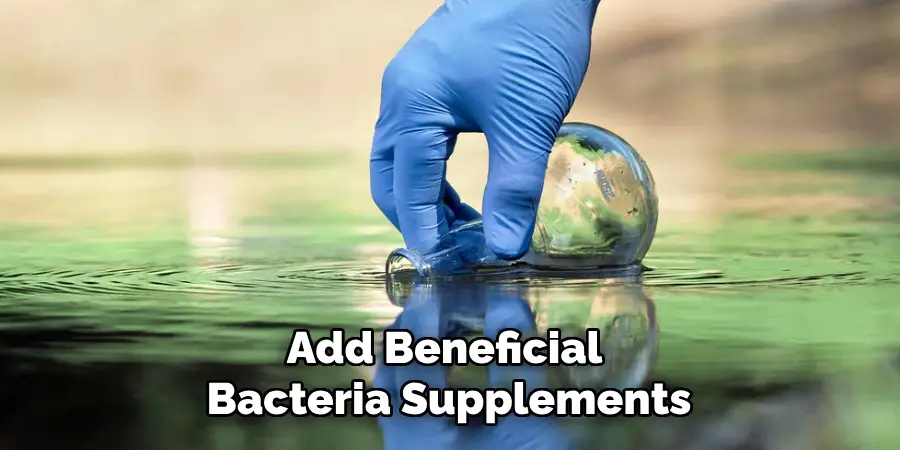
Method 8: Copper Algaecides
Copper-based algaecides are effective in preventing algae growth in water troughs. Copper ions disrupt algae cell membranes and inhibit photosynthesis, leading to algae cell death. Use copper sulfate or chelated copper products as directed by the manufacturer to control algae growth. However, exercise caution when using copper-based algaecides, as excessive copper levels can be harmful to aquatic life.
Method 9: Aquatic Plants and Biofiltration
Introducing aquatic plants to water troughs can help prevent algae growth by competing for nutrients and shading the water surface. Plant species such as water lilies, duckweed, and water hyacinth can help absorb excess nutrients and create a natural barrier against algae proliferation. Additionally, consider incorporating biofiltration systems, such as floating wetlands or biofilters, to further enhance water quality and reduce algae growth.
Method 10: Diatomaceous Earth
Diatomaceous earth is a natural mineral powder that can be used to prevent algae growth in water troughs. Sprinkle diatomaceous earth into the troughs or apply it as a coating on the interior surfaces to create a physical barrier that inhibits algae attachment and growth. Diatomaceous earth also absorbs excess nutrients and helps clarify the water, reducing algae-promoting conditions.
Regular Cleaning and Maintenance Schedule
To ensure the effectiveness of regular cleaning and maintenance in preventing algae growth, a structured schedule should be established. This involves periodically draining and thoroughly cleaning water troughs to remove any biofilm, debris, or algae. For high-use troughs or those in warm, sunny locations, a weekly cleaning may be necessary. In contrast, troughs in cooler, shaded areas might require less frequent attention, perhaps once every two weeks or monthly.
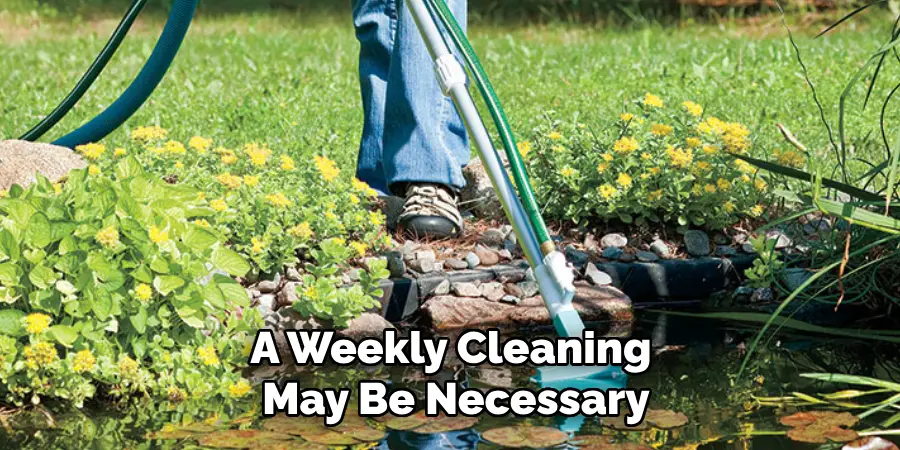
It’s beneficial to record each cleaning session’s date and any observations regarding algae growth or water quality issues. This log can help identify patterns and adjust the cleaning frequency as needed. Additionally, inspecting the troughs for damage and wear during each cleaning can prevent leaks and ensure the troughs remain an effective resource for water delivery. Regular maintenance not only combats algae growth but also enhances the overall health and hygiene of the water supply for livestock.
Common Mistakes to Avoid
In the process of preventing algae growth in water troughs, certain missteps can inadvertently promote the condition they aim to mitigate. One such common error is the overuse or incorrect application of algae treatments and algaecides, which can harm livestock and disrupt the ecological balance of the trough.
Another mistake involves neglecting regular inspections and maintenance, allowing organic matter and debris to accumulate, thus providing algae with an ideal growth environment. Additionally, failing to provide adequate shade or incorrectly positioning water troughs can increase sunlight exposure, further enhancing conditions favorable for algae proliferation. Overlooking the importance of a balanced ecosystem within the trough by not incorporating biofiltration or beneficial bacteria can also contribute to algae issues.
To ensure the health and cleanliness of water troughs, it is crucial to avoid these pitfalls and adhere to the recommended strategies for algae prevention and water quality management. However, if algae growth persists despite these efforts, it may be necessary to consult a professional or implement more stringent measures. Ultimately, vigilance and proactive maintenance are key to preventing algae growth in water troughs and maintaining optimal conditions for livestock hydration.
Conclusion
Incorporating preventive measures to thwart algae growth in water troughs is essential for livestock owners seeking to maintain clean and healthy drinking water for their animals. By implementing the strategies outlined in this guide, from regular cleaning and maintenance to exploring natural additives and strategic placement, you can effectively mitigate algae proliferation and its associated challenges.
By proactively addressing this issue, you not only ensure the well-being of your livestock but also extend the lifespan and functionality of your water troughs. As you continue to prioritize cleanliness and hygiene in your animal care practices, the knowledge gained from preventing algae growth will serve as a cornerstone for maintaining optimal conditions within your farming or ranching operation.
Hopefully, this article gave you some helpful tips about how to prevent algae growth in water trough successfully, so now that you have the proper knowledge on how to get the job done, why not give it a try today?
About
Outdoor Fixes is a distinguished figure in the world of Diy design, with a decade of expertise creating innovative and sustainable Diy solutions.
His professional focus lies in merging traditional craftsmanship with modern manufacturing techniques,
fostering designs that are both practical and environmentally conscious. As the author of diy,
outdoorfixes delves into the art and science of outdoorfixes-making, inspiring artisans and industry professionals alike.
Education RMIT University
(Melbourne, Australia) Associate Degree in Design (Outdoor Fixes) Focus on sustainable design, industry-driven projects,
and practical craftsmanship. Gained hands-on experience with traditional and digital manufacturing tools, such as CAD and CNC software.
Nottingham Trent University
(United Kingdom) Bachelor’s in outdoorfixes.com and Product Design (Honors) Specialized in product design with a focus on blending creativity with production
techniques. Participated in industry projects, working with companies like John Lewis and Vitsoe to gain real-world insights.
Publications and Impact
In diy, Outdoor Fixes his insights on indoor design processes, materials, and strategies for efficient production.
His writing bridges the gap between artisan knowledge and modern industry needs, making it a must-read for both budding designers and seasoned professionals.

